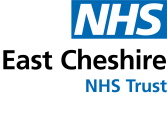A patient passport provides immediate and important information for doctors, nurses and administrative staff in an easy to read form, promoting a positive experience for people with learning disabilities going into hospital.
Information recorded on the passport must be collected in consultation with the service user, their family and any other carers and professionals involved in caring and supporting them, whether this is at home, at day services, at work, at college or at hospital.
Consent
If the patient has a passport completed prior to admission, staff can be assured that the patient’s consent will have been obtained or it will have been deemed in the patient’s best interest.
When and how should the patient passport be used?
The patient passport should be taken with the service user when -:
- they are admitted to hospital for any planned or unplanned assessment and treatment
- attending outpatients appointments
- any other health appointments.
The patient passport should move around the hospital with the service user and any necessary updates should be written on the passport by hospital staff.
How should the patient passport be completed?
Patient Passport
Guidance on completing passport
This is me - Support in an unfamiliar place
The front page contains important information for doctors and nurses who will be required to assess and treat the patient.
The reverse contains personal information which staff need when booking in or arranging discharge.
The front page has a traffic light sequence as illustrated above. At the top there is space to enter the service user's name and a recent photograph. The remainder is split into 4 sections and information within each section needs to be entered.
If you need help to fill out a patient passport or would like more information about patient passports please contact the Patient Experience Team
Telephone: 01625 661560/663981
Found a problem? Report it and help us to improve our website
